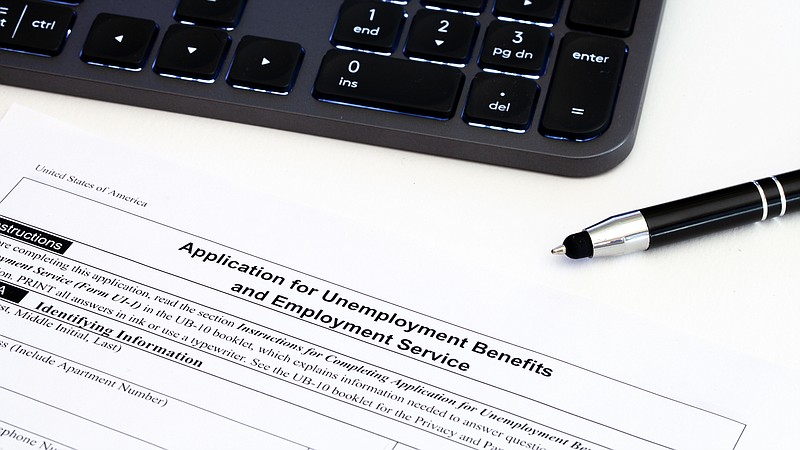Although the first wave of reopenings is returning workers to restaurants, retailers and other businesses hit hard by the coronavirus pandemic, layoffs are seeping through sections of the job market that previously escaped major damage.
On Thursday, the Labor Department said more than 1.5 million Americans filed new state unemployment claims, including 21,417 new claims in Tennessee. That was the lowest number since the crisis began, but far above normal levels.
A further 700,000 workers who were self-employed or otherwise ineligible for state jobless benefits filed new claims for Pandemic Unemployment Assistance, a federal aid program.
The overall number of workers collecting state benefits fell slightly in the most recent seasonally adjusted tally, to 20.9 million in the week ended May 30, from a revised 21.3 million the previous week.
"We're slowly seeing the labor market recovery begin to take form," said Robert Rosener, an economist at Morgan Stanley, pointing to an "initial reopening bounce."
But, he added, "there's still an enormous amount of layoffs going on in the economy."
Mark Hamrick, Bankrate.com's Senior Economic Analyst, said new claims for jobless benefits have topped 1 million for 12 straight weeks. That's in contrast to fewer than 300,000 new claims in mid-March before the crisis took hold.
"As the COVID-19 pandemic continues to claim devastating tolls in lives and lost economic output, the elevated level of new jobless claims at 1.5 million serves as a reminder that this two-sided crisis is very much persisting," he said.
On Monday, BP said it would lay off 10,000 people worldwide, mostly office-based workers. The entertainment promotion giant AEG told employees that it would carry out layoffs, furloughs and salary reductions on July 1. Job losses were announced this week at the University of Denver, the nonprofit group UJA-Federation New York, and the city of Peoria, Illinois, among others.
The weekly report on unemployment claims comes after the government reported that jobs rebounded last month and that the unemployment rate fell unexpectedly to 13.3%. Correcting for a classification error, the actual rate was closer to 16.4% - still lower than in April, but higher than at any other point since the Great Depression.
In the 10-county Southeast Tennessee region, another 1,631 newly laid off workers filed for jobless benefits last week.
Aided by the extra $600-a-week payment for jobless benefits from the federal government, Tennessee paid out $288.5 million in benefits last week to 309,728 unemployed Tennesseans, or an average of more than $930 per claim. Some of those payments represent unpaid claims since the Coronavirus aid package was developed in March. Due to the flood of applicants, some claims were not initially paid.
With the extra $600-a-week federal benefits, unemployed persons in Tennessee may receive up to $875 a week in jobless benefits.
Jerome Powell, the Federal Reserve chairman, warned on Wednesday that the economic pain could last for years and that there would be "a significant chunk" - millions of workers - "who don't get to go back to their old job, and there may not be a job in that industry for them for some time."
Powell said that "it's possible Congress will need to do more," but a divide has arisen on Capitol Hill over whether to extend a $600 weekly supplement to state unemployment benefits beyond July 31, as Democrats advocate, or to pare or halt it, possibly replacing it with government incentives to return to work, as some Republicans have proposed.
Unemployment remained below 4% for much the year before the pandemic began. Reopening efforts will quickly reinstate a third of the workers who lost their jobs, said Beth Ann Bovino, chief U.S. economist at S&P Global. Hiring efforts, like a recent push by the broadband and cable company Charter Communications to fill thousands of positions, will help nudge the jobless rate down.
But a return to the labor market conditions that preceded the pandemic is unlikely before 2023, Bovino said.
"We're expecting a long haul," she said. "When people start talking about a V-shaped recovery, it's like claiming success with the patient still on the table."
From March through May, 30% of lost jobs came in the food service industry, Bovino said. Ten percent stemmed from retailers. But as states try to stoke the economy by gradually lifting restrictions on those businesses and others, the shock of the pandemic is increasingly reverberating through sectors like manufacturing and professional services.
With last week's new filings, more than 44 million people have applied for state jobless benefits since mid-March. In addition, as of May 23, 9.7 million people were collecting Pandemic Unemployment Assistance benefits, the government said Thursday. Unlike the figure for state claims, the number for pandemic assistance is not seasonally adjusted.
In the third quarter, more employers than in the first half of the year expect to shrink payrolls, while fewer companies plan to increase hiring, according to a survey of 7,700 U.S. businesses by the employment agency ManpowerGroup. Seasonally adjusted hiring plans are the weakest in a decade.
"These knockdown effects are starting to ripple through industries that initially seemed more secure, but are now facing a second wave of job losses," Bovino said.
